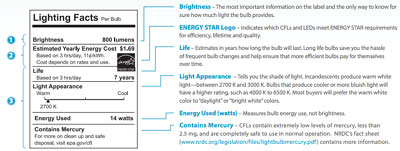On January 1, the US officially begins the shift we heard so much about a few years ago – those outdated, extemely inefficient 40- and 60-watt incandescent light bulbs will no longer be allowed to be manfactured or imported into the US.
75-watt and 100-watt incandescent bulbs have already been phased out over the past two years, but over half the bulbs bought in the US are the lower power 40- and 60-watt bulbs.
Retailers are allowed to sell their inventory of the old bulbs – Home Depot expects to run out in mid-2014.
Going forward, people will still be able to buy incandescent bulbs – the only difference is that they will use 28% less energy.
It’s not that the old bulbs were banned – it’s just that they don’t meet new energy efficiency requirements. Incandescents are hot to the touch because almost all the energy they create (90%) is wasted as heat instead of producing light.
A 60-watt LED costs about $10 today, down from $25-$40 just a couple of years ago.
All major lighting companies, including GE, Philips and Sylvania, have been supportive of the advance in technology and have already upgraded their supply chains to produce the energy-savings bulbs.
When the transition is complete, the US will save $13 billion every year on energy – equal to that generated by 30 large coal-burning power plants (and their mercury emissions), says Noah Horowitz, Senior Scientist and Director of the Center for Energy Efficiency for the Natural Resource Defense Council.
When buying compact fluorescents and LEDs, it’s important to look for the Energy Star label, because some perform better than others, he says.
If you’re putting up xmas lights this year, LEDs will save you lots of energy and money on utility bills. Traditional xmas lights in the US use the same amount of energy as 500,000 homes do in a month, according to the Department of Energy.
Lighting consumes 19% of the electricity used in the US, and coincidentally, nuclear plants provide 19% of US electricity. Thus, one could argue that our fleet of 104 commercial reactors exists to keep the lights on.
Read our article, Amazing Impact of Efficient Light Bulbs, to find out how to choose LEDs based on how much light they produce (expressed in lumens) rather than how much power they use (watts).

